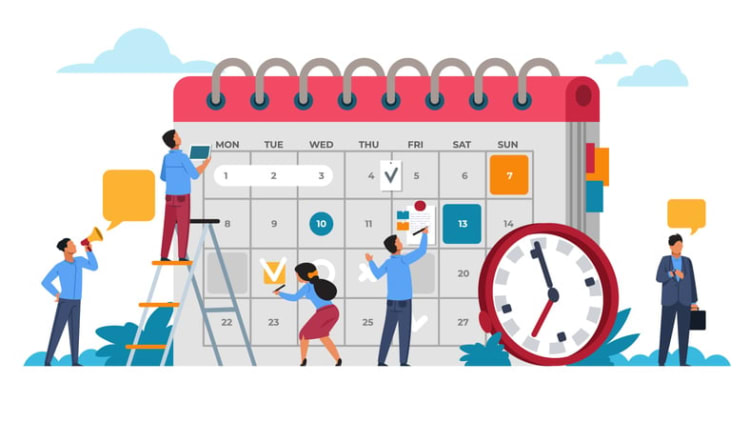With the ever-evolving landscape of events and conferences, virtual events have become a staple in the industry. They provide opportunities for organizations to connect with their audiences, share knowledge, and build relationships without the constraints of geographical location. But how can you ensure the success of your virtual event? The key lies in understanding and implementing virtual event best practices that cater to the unique needs and expectations of the virtual environment. In this blog post, we’ll explore essential best practices that will not only elevate your online event hosting but also create memorable experiences for your attendees.
Key takeaways
- Establish clear objectives and cater to your target audience for successful virtual events.
- Leverage the right platform with features like immersive audio, customizable 3D environments and integration with other tools.
- Implement innovative networking strategies, maximize attendee engagement & evaluate event success for future planning.
Establishing clear objectives for your virtual event

Clear objectives are the cornerstone of a successful virtual event. Align your event with your overall strategy and desired outcomes by setting SMART goals - specific, measurable, achievable, relevant, and time-bound. As an event organizer, contemplate the desired outcomes for participants, as well as the goals of attendees, sponsors, and exhibitors, when determining event objectives. For instance, sponsors at a virtual networking event may seek increased visibility within the virtual space and among attendees.
Additionally, choosing a theme for your virtual event plays a vital role in defining clear objectives. Factors such as the type of event (e.g., a virtual conference), the industry you are catering to, and your target audience (beginners or professionals) should be considered when choosing a theme. A well-chosen theme not only sets the tone for your event but also helps in attracting the right audience and speakers who can contribute value to your event.
Identifying and catering to your target audience

Identifying and addressing your target audience is a vital part of orchestrating a successful virtual event. Defining your target audience influences numerous aspects of your event, such as the speakers invited, topics discussed, and event timing. To identify the target audience, conduct research to gain insight into their wants, needs, and expectations. Providing the audience with pertinent content is a key factor in organizing successful virtual events.
Upon identifying your target audience, tailor your event content, format, and marketing strategies to meet their unique needs, preferences, and expectations. For example, securing a renowned speaker with relevant knowledge and experience that resonates with your target audience can effectively increase interest and ticket sales for your online event. Creating an event brand is also essential to ensure that event marketing efforts effectively communicate with the target audience and reinforce the message and branding across various marketing channels.
Selecting the perfect virtual event format

Selecting the most suitable format for your next virtual event is key to fulfilling your objectives and accommodating your audience’s needs. Some popular virtual event formats include:
- Webinars
- Conferences
- Workshops
- Networking events
When selecting a format, consider the type of event and whether it is intended for internal or external audiences. Virtual event platforms like vFairs, Hopin, and Run The World offer tailored solutions to suit your event objectives and vision.
For instance, Women In Product managed to host a virtual event, as opposed to an in person event, organizing a fully online events experience with the assistance of the Run The World virtual conferencing platform. The event featured fireside chats, keynote speakers, and networking opportunities, making it a successful virtual hiring event. Choosing the appropriate virtual event format can help cultivate an engaging and memorable experience for your audience, thereby contributing to the event’s success.
Crafting a well-structured agenda
Crafting a well-structured agenda is vital to balance informative sessions, engaging activities, and networking opportunities. It also allows for breaks and downtime for attendees, preventing them from feeling overwhelmed. Setting realistic timelines for your virtual event ensures sufficient time between sessions, provides adequate breaks, and guarantees enough planning time prior to the event.
Including breaks in your virtual event is important for maintaining attendee well-being and mitigating screen fatigue. Additionally, inviting keynote speakers and entertainers can generate engaging and reusable event content while providing a welcome respite from the professional aspects of the event. A well-crafted agenda ensures a smooth event flow, keeps attendees engaged, and contributes to the overall success of your virtual event.
Leveraging the right virtual event platform with Kumospace
Choosing an appropriate virtual event platform is vital for the success of your event. Some features to consider when selecting a platform include:
- Immersive and interactive event experience
- Spatial audio
- Customizable environments
- Seamless integration with other tools
One platform that offers these features is Kumospace.
These features enable you to create memorable experiences and drive attendee engagement, ultimately contributing to the success of your virtual event.
Kumospace features
Kumospace offers unique features that enhance the virtual event experience. Spatial audio technology allows for immersive chat experiences, enabling users to hear each other within their audio circles and facilitating multiple conversations within one space. Customizable 3D environments can be designed with rooms, furniture, and templates based on your preferences, branded with custom images, animated gifs, signs, and sticky notes.
Interactive elements such as virtual beverages, music objects, and games are also available in Kumospace, providing attendees with engaging experiences and opportunities for networking and collaboration. These features not only make your virtual event more appealing but also contribute to increased attendee satisfaction and engagement.
Integrating Kumospace with Other Tools
Kumospace can be integrated with other tools and platforms to streamline event management, registration, and marketing efforts. Compatible event management tools include:
Integrating Kumospace with registration platforms such as Hopin is also possible, allowing for a seamless registration experience and better event management.
Integration of Kumospace with other tools allows for an optimized event planning process and the creation of a comprehensive event strategy, thus ensuring a successful virtual event. This seamless integration helps you manage your event more efficiently and provides a smooth experience for your attendees.
Implementing innovative networking strategies

Networking holds paramount importance in any event, including virtual ones. Implementing innovative networking strategies in your virtual event can foster connections and engagement among attendees. Virtual breakout rooms, speed networking sessions, and interactive activities are effective ways to facilitate networking opportunities in a virtual environment.
Platforms like Accelevents and Hopin provide a range of powerful networking tools, including:
- Lounges
- Workshops
- 1:1 attendee video
- Automated speed networking
- Live attendee chat
- Roundtable networking functions
These tools can foster connections between attendees and create meaningful networking opportunities. By incorporating these strategies, you can enhance your attendees’ overall event experience.
Mastering virtual event promotion

Effective promotion of your virtual event can lead to an increase in registrations, sponsors, exhibitors, and revenue. Utilizing a multi-channel approach, including email marketing, social media, and targeted advertising, can help you reach your target audience and drive registrations. Platforms like Twitter, Facebook, Instagram, and LinkedIn can be leveraged to build your event brand and engage early with your audience.
Event listing platforms can also facilitate attendee discovery and ensure that event details are disseminated to the appropriate audiences. Consistency in branding across various marketing channels is crucial for a smooth customer experience and easy identification of your event. By mastering virtual event promotion, you can increase visibility, attract the right audience, and ultimately, ensure the success of your event.
Ensuring flawless technical execution

Seamless technical execution is a vital component of any virtual event. To ensure a smooth and issue-free event, organizers should:
- Conduct testing
- Rehearse
- Plan for contingencies
- Provide support and guidance to presenters and attendees
Thorough testing can identify potential issues before the event, while rehearsals guarantee that presenters are ready and familiar with the technology.
Support and guidance for presenters and attendees are essential for maximizing the virtual event experience. Some ways to enhance the overall event experience include:
- Offering access to suitable technologies
- Assisting presenters in understanding their contributions to the event
- Providing tech support to resolve any difficulties faced by attendees
Ensuring flawless technical execution contributes to the success of your virtual event and leaves a positive impression on your attendees.
Maximizing attendee engagement and interaction

Events that are engaging and interactive have a higher likelihood of retaining attendees and creating a lasting impression. Incorporating the following interactive elements throughout your virtual event can help maximize attendee engagement and interaction:
- Live Q&A sessions
- Polls
- Gamification
- Live chats
- Breakout rooms
- Live polling
- Discussions
Utilizing these features can foster attendee engagement in virtual events.
Gathering feedback during the event can also be valuable for understanding attendees’ needs and preferences. Live polling features can collect feedback in real-time, allowing organizers to make adjustments and improvements as needed. By maximizing attendee engagement and interaction, you can create a memorable experience that will keep your attendees coming back for future events.
Evaluating event success and gathering insights
Assessing the success of your virtual event and collecting insights is vital for continuous improvement and planning of future events. Here are some ways to analyze post-event data and gather valuable insights:
- Review registration numbers to gauge interest and reach of your event.
- Track attendee count and duration of attendance to understand engagement levels.
- Analyze session popularity to identify topics that resonated with your audience.
- Conduct post-event surveys to obtain honest feedback and identify areas for improvement.
By analyzing this data and gathering feedback, you can enhance future events and provide a better experience for your attendees.
Tracking event goals and analyzing the data gathered from the event can provide insights into areas of improvement and success. Incorporating lessons learned into your event strategy can ensure the success of your future virtual events. By evaluating event success and gathering insights, you can continuously improve your events and provide a better experience for your attendees.
Summary
In conclusion, hosting a successful virtual event requires a comprehensive understanding of best practices and a focus on attendee engagement and interaction. By establishing clear objectives, identifying and catering to your target audience, selecting the right event format, leveraging the right virtual event platform, and implementing innovative networking strategies, you can create memorable and engaging experiences for your attendees.
Continuously evaluating event success and gathering insights can help you improve future events and exceed your attendees’ expectations. With the right planning, execution, and promotion, your virtual events can become a valuable asset for your organization and a sought-after experience for your audience.
Frequently asked questions
To make a good virtual event, choose the right platform, set clear goals, select interesting partners, book live keynote speakers, create a social media strategy, automate reminder emails for registrants, and develop an engaging agenda with moderators. Additionally, get to know your audience, promote your event, include virtual networking features, and use post-event analytics & surveys to debrief.
Incorporate live polls, quizzes, trivia, giveaways, Q&As and social media activities to engage attendees and spark competition. Utilize breakout rooms and virtual networking sessions to create smaller group discussions and encourage participation. Use surveys to gain feedback before and after the event, and an emcee or host to keep attendees entertained.
Create a dedicated event website, leverage email marketing, use social media and event discovery sites, advertise on Google and other social media platforms, and blog about the event to attract participants to your virtual event.
Common virtual event formats include webinars, conferences, workshops, and networking events.
Ensure flawless technical execution for your virtual event by thoroughly testing, rehearsing, and planning for contingencies, as well as providing support and guidance to presenters and attendees.





